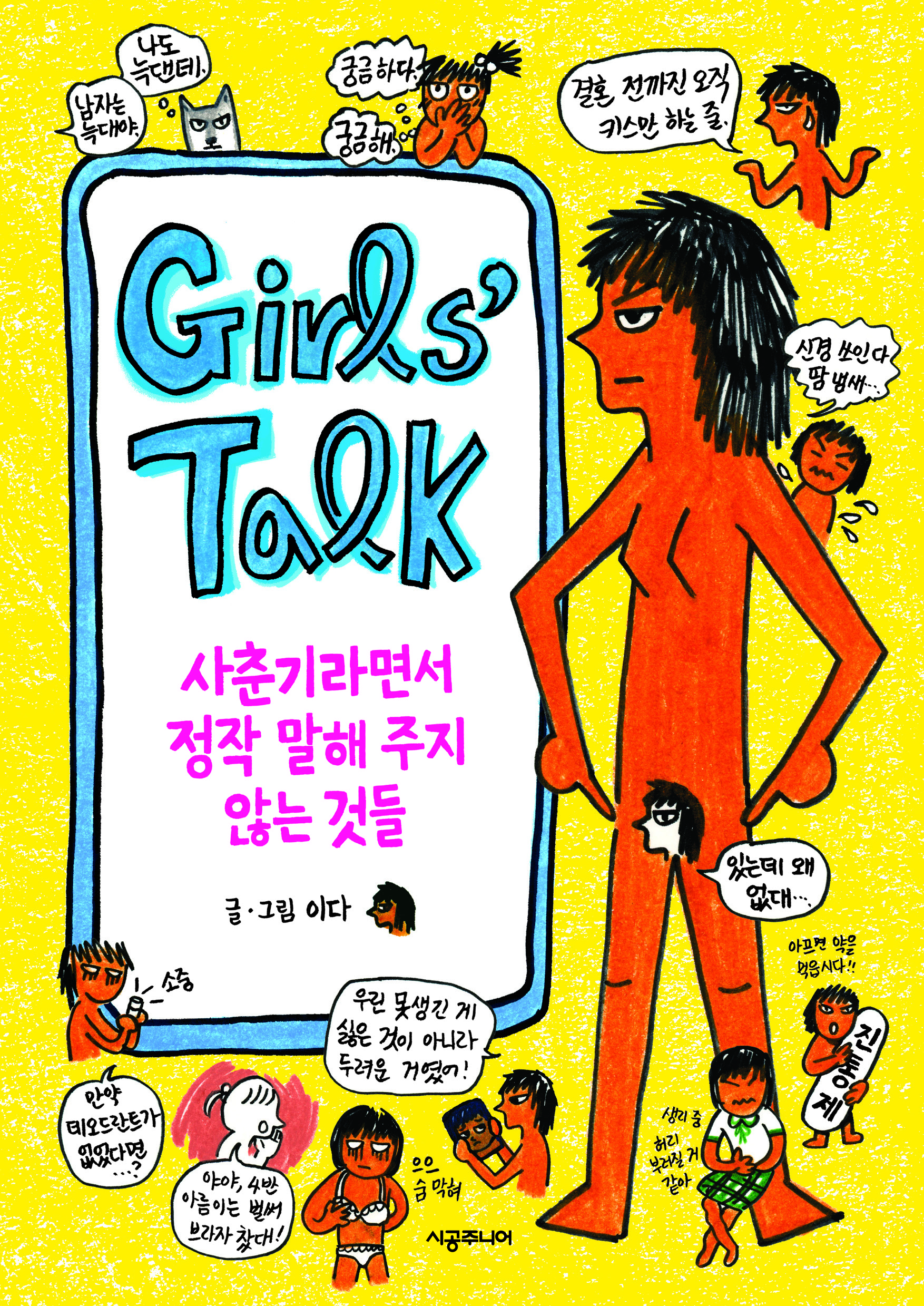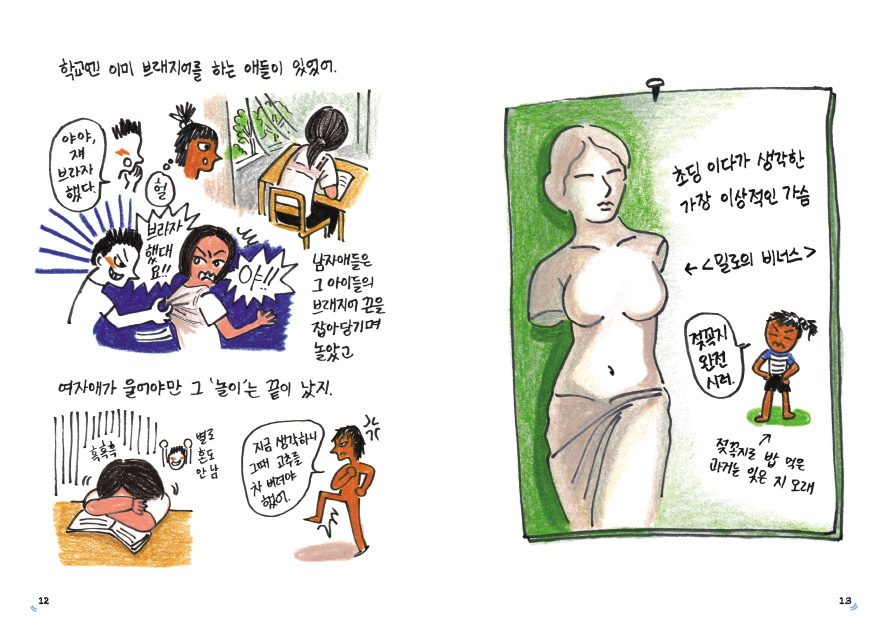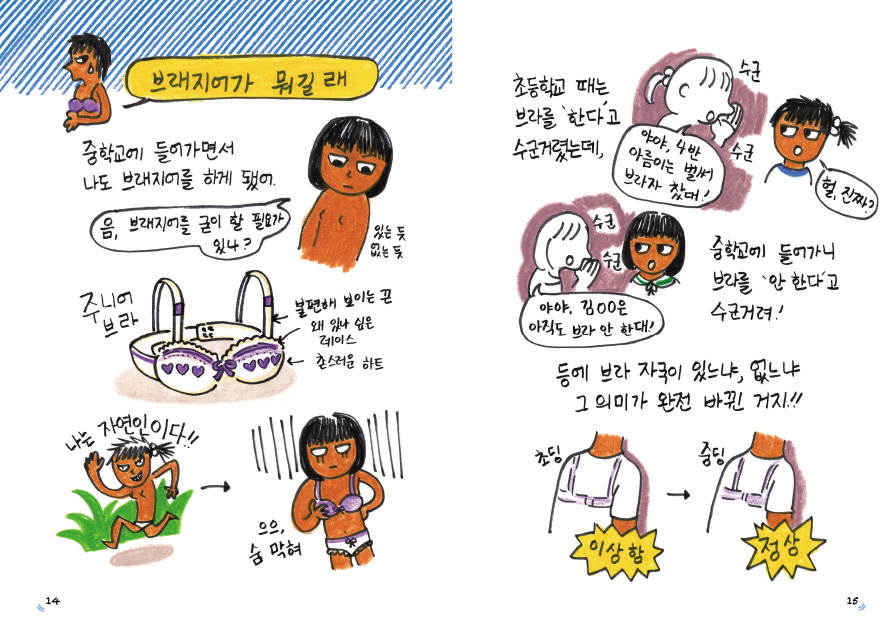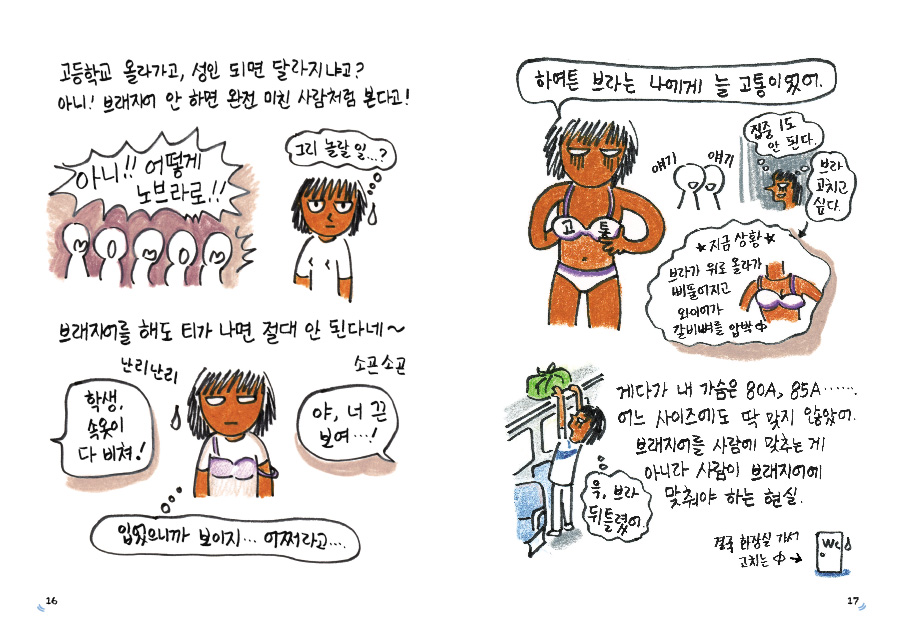| Categories | Nonfiction |
|---|---|
| Author | Ida |
| Ages | 11+ |
| Publication Date | April, 2019 |
| Keywords | #Essay for teenagers #Puberty #Sex Education |
| Foreign Rights Sold | Taiwan |

| Categories | Nonfiction |
|---|---|
| Author | Ida |
| Ages | 11+ |
| Publication Date | April, 2019 |
| Keywords | #Essay for teenagers #Puberty #Sex Education |
| Foreign Rights Sold | Taiwan |
| Pages | ISBN | Size (mm) |
|---|---|---|
| 140 | 978-89-527-8925-9 | 148 X 210 |
Open and entertaining; entertaining but insightful!
starts from the period when the author first experiences the development of secondary sex characteristics. She is disappointed that the voluptuous cleavage she sees in her mother’s magazine seem like an impossibility to her, and she is utterly devastated to discover messy hair growing on her underarm. Young readers will find themselves laughing as they encounter anecdotes about how she lacked knowledge about menstruation and misconstrued the dried blood stain on her panties as poop, or how she tore a page with a dirty story from her mother’s magazine, kept it in her desk drawer, and read it until the paper fell apart.
But the book is more than a couple of amusing anecdotes. Through the story about an inferiority complex about her looks, she declares that she “didn’t hate but feared her ugliness”, criticizing the blind lookism that considers “ugliness an inferior trait”. It also questions the social attitude that characterizes teenage girls’ sexual desire as more passive and defensive than that of teenage boys.
As such, speaks about natural changes that people go through during puberty, while at the same time providing a penetrating insight into areas that need improvement. What is so remarkable about this book is the way it seamlessly blends the critical voice into stories that vividly capture the reality teenage girls face.
Artist, illustrator, and contractor for art labor. Born in 1982 in Pohang City, author Ida graduated from Seoul Women’s University, where she majored in Christian studies and creative writing. In the early 2000s, she received attention for her book , which illustrated the dark, private thoughts within her. The autobiographical character in her works is referred to as “a grown-up girl”—she retains the identity of a little girl even after becoming a grown-up.



Privacy Policy
closeThis Privacy Policy (the "Policy") explains the way of treatment of the information which is provided or collected in the websites on which this Policy is posted. In addition the Policy also explains the information which is provided or collected in the course of using the applications of the Company which exist in the websites or platforms of other company. treatment of the information which is provided or collected in the websites on which this Policy is posted. In addition the Policy also explains the information which is provided or collected in the course of using the applications of the Company which exist in the websites or platforms of other company. treatment of the information which is provided or collected in the websites on which this Policy is posted. In addition the Policy also explains the information which is provided or collected in the course of using the applications of the Company which exist in the websites or platforms of other company. treatment of the information which is provided or collected in the websites on which this Policy is posted. In addition the Policy also explains the information which is provided or collected in the course of using the applications of the Company which exist in the websites or platforms of other company.